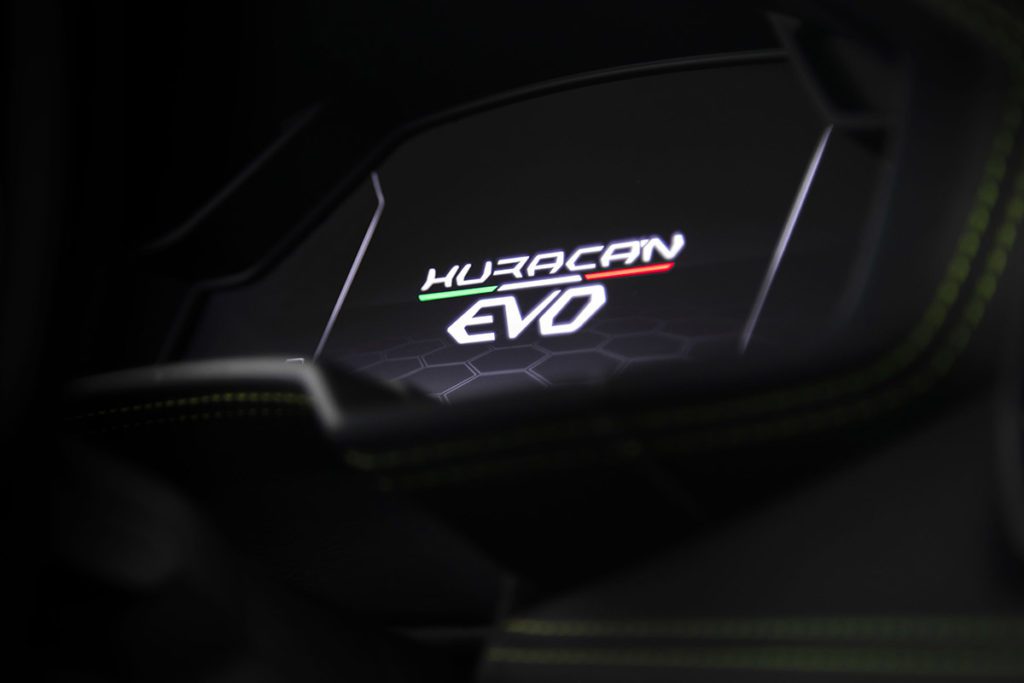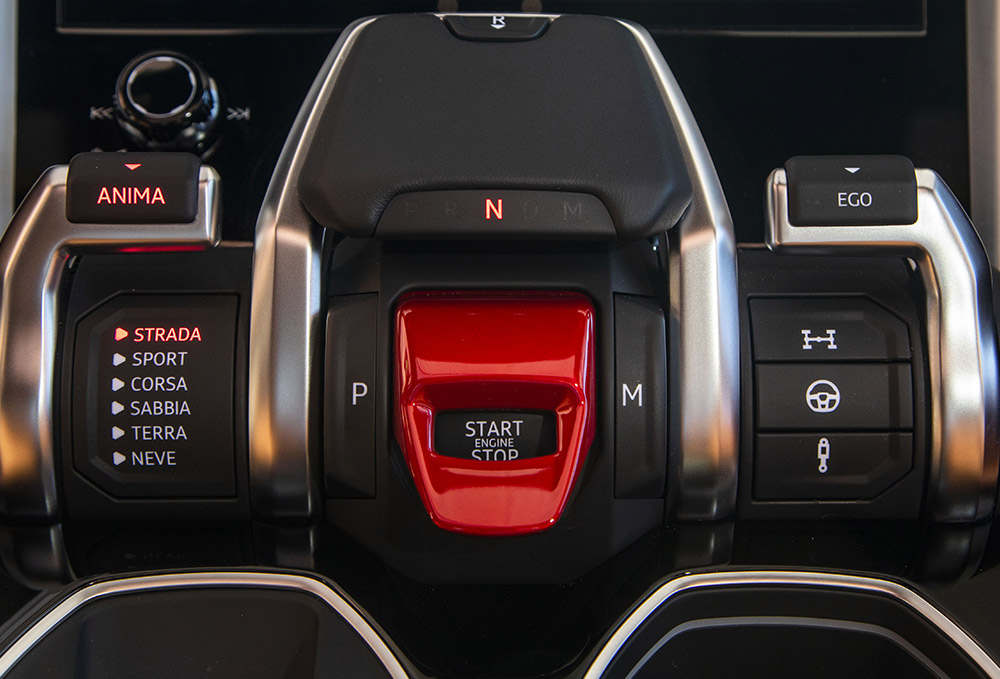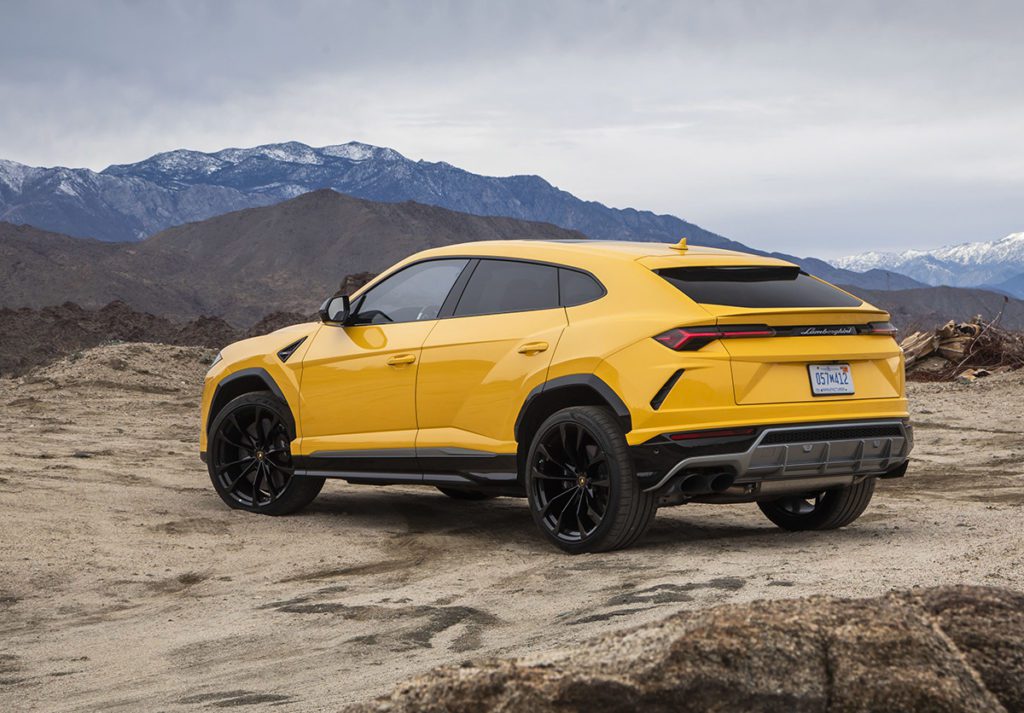Lamborghini introduces two new models – the world rejoices
HANDSOME, COLORFUL, EYE-CATCHING, MUSCULAR, POWERFUL, DYNAMIC, head-turning, dreamy…but enough about me. Let’s talk about cars for a minute.
Imagine, for the moment, the Thanksgiving table at Villa Volkswagen, hosted by company chairman, Dr. Herbert Diess. Given the incredibly illustrious members of that family — Audi, Bugatti, Bentley, Ducati, Lamborghini, Porsche, VW and more — it would be every car-lover’s dream to attend such an event.
Let’s also imagine that a dispute has broken out between three of the family members. Bob (Bentley), Aaron (Audi), and Larry (Lamborghini) each weighing in on why he should get the biggest piece of pumpkin pie. Unfortunately, Dr. Diess already has cut it, so the equality ship already sailed — there must be only one undisputed winner.
Bob reminds the group that the responsibility for the family claim of elegance rests upon him. Aaron weighs in that he wears the family’s mantle of sportiness. But Larry comes to the table with decades of unparalleled, edgy designs and prodigious power, so, by all rights, the largest piece (read most-powerful, torque-iest piece) should go to him. Doubtful that the imagined family engine wars would be decided thusly, but it’s as good a story as any.
The foregoing may be interesting because there is a certain sharing that goes on, quite understandably, among the various brands under the VW umbrella. For example, the engine which powers the Audi R8 is similar to the one moving the Lamborghini Huracán Evo. However, Audi’s pumps out between just over 560 and about 610 horsepower (depending on which variant is chosen), while the Evo’s clocks in at over 630 ponies. To my mind, having driven both extensively, the R8 has a “Germanic” feel of an extremely competent vehicle that does everything well (I liked it a lot), whereas the Evo (with much German engineering and “Germanic involvement”) is all Italian with the excitement and actual raucousness that the Italian automobile culture connotes.
The Huracán model of Lamborghinis arrived in 2014 as a replacement for the “entry level” Lamborghini, the Gallardo. (Huracán and Gallardo, like virtually all Lamborghinis, are names of fighting bulls, though “Huracán” also is a Spanish word for “hurricane”.) Since its arrival, the Huracán has been refined and adjusted and the Evo is the natural evolution of the line (thus providing a major hint at the origin of the model’s name). The Evo clearly looks like the other Huracáns though refinements and other changes are quite apparent. For example, the front bumper is redesigned to work well with the new front splitter and its integrated wing, the sides show changes in the look of the windows and air intakes while the rear sports elevated exhaust pipes (pay attention, motorcyclists!) and a redesigned slotted spoiler. The wheel design also is new on this model.
With the new visuals just mentioned comes improved aerodynamics. Coupled with all-wheel drive and all-wheel steering (on two of the three Evo variants), the Evo is more responsive and, need I add, it’s quick! 0-60 takes only 2.9 seconds, an unheard-of metric just a few years ago.
Luckily for me, Lamborghini chose to showcase the car at Willow Springs International Raceway, the well-known track near Rosamond and Lancaster in Southern California and the location of many scenes in the current Ford vs. Ferrari film. It’s a great track, with turns of varying radii (I’ve been waiting years to use that word again), elevation changes and other traps for the unwary. I am proud to say (and my financial advisor is happy that I can say) that I kept it on the track and pointed the right way the entire time, which actually is a lot easier in a vehicle with the Evo’s tenacious grip, nimble steering and prodigious power. And as with most other modern Lamborghinis, the Evo is eminently driveable.
It was a hot day at Willow Springs (not an unusual occurrence) yet we ran lap after lap in full air conditioned comfort in the cabin. Gone are the divas of yesterday which might perform mightily on the track and then wheeze and cough while trying to maintain an idle after several laps, many even letting loose with occasional bladder lapses while waiting. No, the Evo clearly is a car which can take you to the track, perform flawlessly on the circuit and then take you home (with room for trophies).
Pricing? Thanks for asking. Huracán Evos come in three flavors: rear-wheel drive coupe (about $212,000), all-wheel drive coupe (about $268,000) and the all-wheel drive Spyder (convertible) (about $290,000).
I had nowhere near enough time with the Evo (I usually borrow cars for about a week at a time) so my only experience of it was on the track. I am not complaining, mind you, as I had a terrific time, but I’m just explaining why my driving impressions are so narrowly focused. That said, I certainly had sufficient opportunity to determine that this was an amazing car, capable of fantastic feats of performance, doing it all with confidence, class and aplomb.
Having experienced such incredible performance with the Evo, I was surprised/not surprised by the Urus (cognoscenti tell me it’s pronounced “ooo – roos”), Lamborghini’s spectacular initial entry into the SSUV arena. (No shock that Lambo calls their ute a “Super Sports Utility Vehicle.”) And what an entrance, so worthy of the international star that it has become. Urus sales to date far exceed any other Lamborghini model, and the rush to buy one does not appear to be abating. My week with the Urus gave me ample reasons why the public had an immediate love affair with this car.
First (especially as I am from Los Angeles), let’s start with the looks. Yes, it resembles other SUVs, of course, as form really does follow function if you want the motor in the front, a few rows of seats in the center, and a cargo area in the rear. But Lamborghini has been able to inject the inimitable Lamborghini DNA into this new stormer; so, whether it’s coming toward you or you’re behind it on the road (a common experience, given its performance), there’s no doubt that it’s another creation from the Saints of Sant’Agata Bolognese.
Let’s start from the front. Especially on “my” yellow (“Giallo Auge”) Urus with shiny black trim, this pairing was, to my eye, the perfect combination, as it highlighted all the special design bits. Nature apparently agreed — several times I had bees alight on the car when stopped or parked. (It would have been hard for the little critters to hang on up to the 190MPH top speed; and, with a 0 – 60 of about 3.5 seconds, that acceleration would challenge even the most determined insects.) With a twin-turbo V-8, it put out over 640 horsepower (no need to check back on the Evo, as it was getting by with “only” 630HP), but the magic happens due to the torque — over 625 pound-feet of twist (compared to the Evo’s 443) which sounds like a machine ready to pull tree stumps from your yard. As high torque provides right-now performance, that big number explains everything about the thrill factor that comes with this hauler.
Sitting up high like a proper SUV and shod in 23-inch (optional) wheels, it’s hard to comprehend why this car can accelerate, stop, and — amazingly — corner with such confidence. It may not have made me want to be a better man, but I certainly wanted to be a better driver able to test the limits of the Urus on the track. Clearly, however, in the twisties so prevalent in Southern California, not many cars, no matter of what ilk, could keep up with the Urus on the corners, much less on the straightaways which reward this car’s incredible power.
Did I mention that “mine” was bright yellow (a color so luminescent that it bears repeating)? With a base price of $200,000, my menu was ticked so many times that the price hit about $243,000. The big tickets? Upgraded B&O sound system ($6,313), the aforementioned 23-inch rims ($5,051), Alcantara seats ($3,157), the Ambient Light Package ($3,036), and the huge panoramic roof ($2,778). You know what? There wasn’t an option I would have deleted. I like the Urus very much, so much that I started to come up with the various reasons why…forget want, I needed one.
To paraphrase Mark Twain, I’ve never met a Lamborghini that I didn’t like. However, that’s not to say that all Lambos are created equal, especially when looking back almost 60 years when Lamborghini opened its doors in 1963. Even their more recent supercars, like the Gallardo and Murcielago, really bear scant resemblance to the Aventadors, Hura- cáns, and Uruses (Uri?) of today. Gone are the days of having to settle for a lack of creature comforts or even reliability in order to have a high-performance Italian car. The Evo and the Urus stand as testaments to the premise that you can have it all, get there quickly, and have fun doing it.

A lifelong petrol-holic, mechanic (cars, motorcycles, boats), and automotive journalist since penning a column for his high school newspaper, internationally rec- ognized attorney Tim Lappen is a partner at a major Los Angeles-based law firm, where he chairs the firm’s Family Office Group and its Luxury Home Group and is, of course, a member of its Motor Vehicle Group. He can be reached at tlappen@gmail.com.









